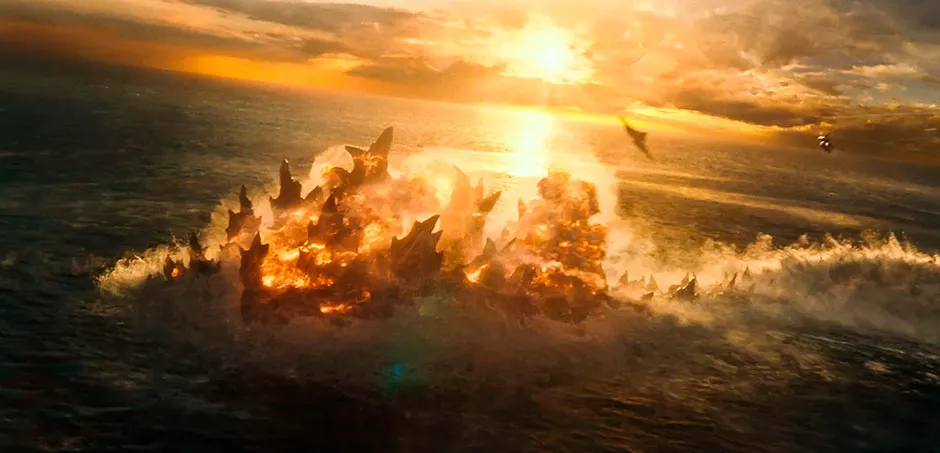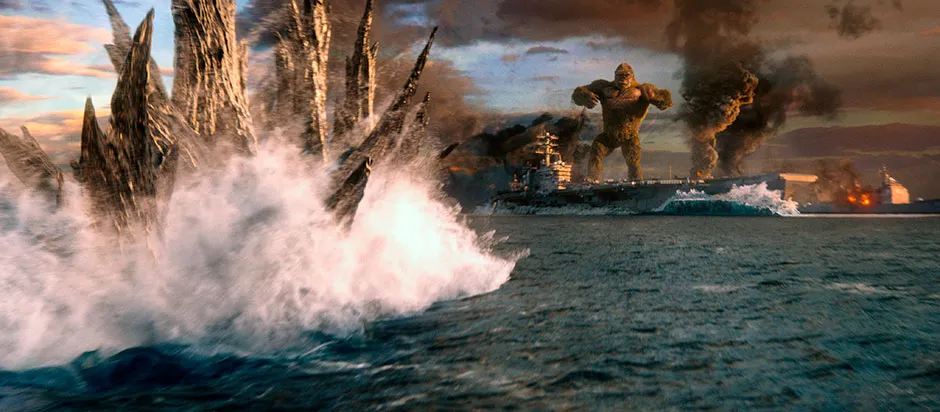After years of build-up within an overlapping cinematic MonsterVerse, Godzilla and Kong are finally going to team up. But who'd win if they got in a scrap?
First things first… we hate to break it to you, but Godzilla and Kong aren’t real, nor do animals similar to either of these MonsterVerse inhabitants exist, nor have they ever. Indeed, nor could they ever. The Godzilla x Kong: The News Empire version of Godzilla is 177 metres long and weighs over 90,000 tonnes. Kong stands 103 metres tall and weighs over 50,000 tonnes.
Land-living animals of this size simply aren’t possible. They wouldn’t be able to support their weight, nor would it be possible to pump blood around the body, send signals along nerves at effective speed, or prevent a lethal build-up of temperature.
It’s for these reasons that the biggest land-living animals ever – the sauropod dinosaurs of the Jurassic and Cretaceous – maxed out at around 100 tonnes. Furthermore, those giants were quadrupeds, supporting their mass with four column-like limbs. The size limit for bipedal animals is lower, probably 20 tonnes or less.
But with these trifling matters of biological reality aside, let’s indulge in some fun speculation and ask the key question of our time… Godzilla vs. Kong, who would win? And can we use science to gain some insight?
The red corner: Godzilla

They don’t call him King of the Monsters for nothing. For starters, he’s armour-plated, his exterior recalling that of lizards like the Komodo dragon and dinosaurs like ankylosaurs, both of which have bony plates embedded in the skin. Ankylosaur plates possessed a Kevlar-like structure of criss-crossing fibres that would have prevented penetration by teeth.
Godzilla is also defended by spiky-edged dorsal plates, tough enough to slice through metal. Attacks from above, or efforts to get him in a headlock, wouldn’t work without the opponent getting ripped to shreds.
Godzilla’s size, conical teeth and chunky jaws imply a phenomenal bite. Rigorous bite force tests haven’t been done on Godzilla, but he could generate forces tens or hundreds of times greater than those calculated for T. rex. These are around 57,000 Newtons. That’s over 900kg per square centimetre (12,000 pounds per square inch), enough to sever body parts and fracture bones.
Godzilla scarcely needs to use his jaws though, since his massive, serrated tail serves as a long-range weapon. We know from previous battles that Godzilla’s tail can be used in club-like fashion. By scaling up from work done on the weaponised tails of dinosaurs, we can conservatively estimate that Godzilla’s tail could strike with an astronomical force of over 22 million Newtons, equivalent to over 2,000 tonnes of mass. And Godzilla’s tail is over 100 metres long, making it hard to approach him without the risk of being struck.
Godzilla’s ultimate weapon is something that gives him quite the advantage: he’s radioactive and blasts enemies with a beam of atomic breath that exceeds 500,000°C. Abilities of this sort don’t exist in the real world. The closest analogue is perhaps the super-hot liquid spray made by bombardier beetles, released at temperatures of around 100°C. This is fatal to similar-sized animals.
Read more about monsters:
- How do we know that the Loch Ness Monster doesn't exist?
- Frankenstein's monster would destroy humanity in 4,000 years
The blue corner: Kong

The fact that Kong is built like a giant gorilla allows us to make some estimates about his abilities. A caveat, though, is that reliable data on the strength of real-world apes is notoriously hard to obtain and many familiar statements – for example, that gorillas are 10 times stronger than people – are guesses based on anecdote rather than the result of careful study.
With that in mind, we can still say that Kong is phenomenally strong. We see him lift objects that are at least as heavy as he is, and throw massive punches too. A punch or even a slap from his hand would deliver a force measurable in millions of Newtons, and the fact that each of his arms is over 70 metres long make him extremely dangerous up close. He’s also fast and agile, and able to leap and run.
Kong also has a powerful bite. Gorillas can exert a bite force of around 91kg per square centimetre (or 1300 pounds per square inch). Kong’s vastly greater size mean a bite force perhaps 100 times greater.
For all this brute strength and power, Kong’s greatest advantage is his intelligence. As a primate and specifically a great ape, he’s able to plan ahead, modify his behaviour, and understand unfamiliar situations more than is typical for animals. Like real-world apes, he almost certainly possesses a ‘theory of mind’: an ability to work out the intentions and perspectives of others. This could prove crucial in anticipating Big G’s fight moves and even give Kong the upper hand.
Kong’s intelligence is also reflected in the fact that he’s a tool user, and even a tool maker. We know from Skull Island that Kong is able to construct clubs from trees, and even use human-made objects like chains and propellers in defeating an enemy.
THE VERDICT: Godzilla wins

It’s obvious that Godzilla and Kong both have significant strengths, any one of which could provide them with a winning move in the event of a fight. We can’t discount the possibility that Kong could get in a lucky punch, or perhaps use his smarts to trick Godzilla into some kind of trap or throw a weapon some considerable distance.
But a nuclear-powered, armour-plated reptile with super-heated atomic breath and a hugely muscular, serrated tail over 100 metres long is just about an unbeatable opponent. No matter how strong or good at using tools you are, you’re in danger of being fried or tail-slapped to death even when at reasonable distance.
It just has to be Godzilla. Sorry, Kong.
